|
|
![]()
FOREST HEALTH - OTHER DAMAGING AGENTS
Many things can damage and kill trees beyond the usual slate of insects and diseases. Some are other biological taxa, such as birds or mammals. Others are abiotic agents, such as weather and wildfire. Weather is a big one and often predisposes a tree to insects or diseases. Of course, humans have a significant impact on tree health. The following page has damage categorized by "Other Biological Agents" (green), "Human Related Agents" (red), and "Abiotic Agents" (yellow). There are many items on this page but more could be added.
| Other Biological Beavers Burls Deer Browsing Invasive Species Mice Nematodes Pileated Woodpecker Porcupines Sapsuckers Tree Age |
Human Related Herbicide Damage Hydrological Damage Salt Injury Urban Splatter |
Abiotic Drought Frost Cracking Frost Damage Lightning Mechanical Damage Scorch Snow, Hail, & Ice Wildfire Wind Winter Injury |
Other Biological Agents (non-insect, non-disease) |
|||
L-flood killed trees by beaver
|
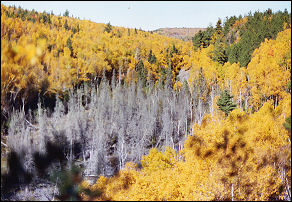 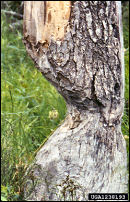 |
||
BURLS - odd growths that can lead to rotting, often creates grain pattern deformations popular for novelty wood crafts, indication of some sort of stress, occurs on many species L- sugar maple burl |
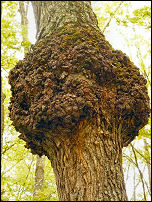 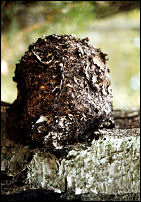 |
||
L-depopulated northern hardwood stand |
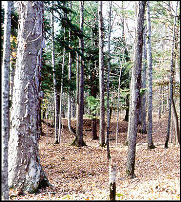 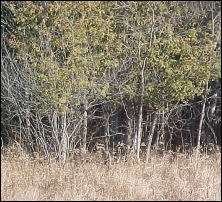 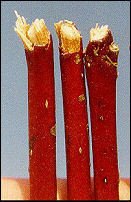 |
||
L&L - garlic mustard |
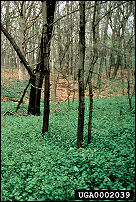 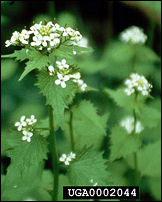 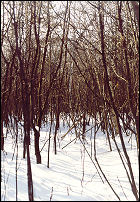 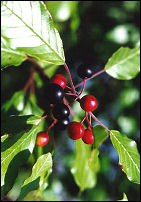 |
||
MICE - will chew bark from stems, can cause high mortality among younger trees L-girdled aspen
|
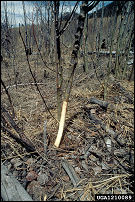 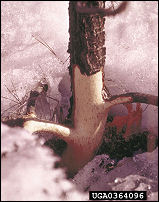 |
||
NEMATODES - tiny worm-like animals that feed on roots, can cause mortality, can associate with fungi and viruses, difficult to diagnose, symptoms similar to other problems L-flowering dogwood roots |
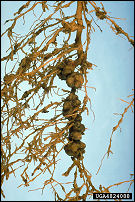 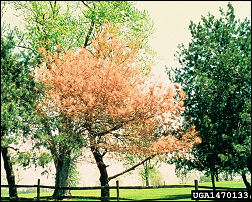 |
||
PILEATED WOODPECKERS - these large birds excavate cavities for nesting and to reach insect larvae, cavities are important for other wildlife, other woodpeckers damage bark in the search for insect larvae, damage usually a sign of more significant tree health problems L-adult bird |
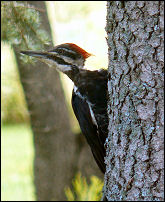 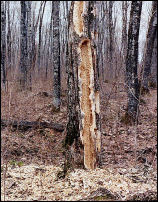 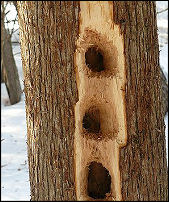 |
||
PORCUPINES - chews off bark, girdling will kill trees or portions of trees, special problem in conifer plantations L-damaged tamarak |
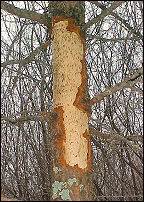 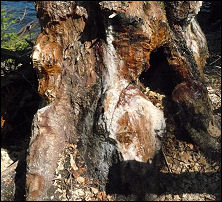 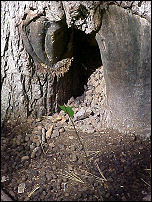 |
||
SAPSUCKERS - birds that peck holes through bark and then consume the sap, holes are usually in rows and columns L-on mountain ash |
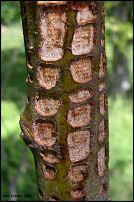 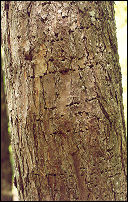 |
||
TREE AGE - not a direct damaging agent but older, overmature trees become more susceptible to nearly all other damaging agents, old trees are not necessarily large trees, forests with disproportionate numbers of overmature trees are vulnerable to rapid change (disturbance) L-overmature jack pine |
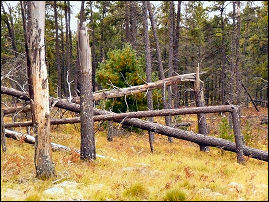 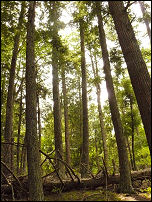 |
||
Human Related Agents |
|||
L-damage from underspraying |
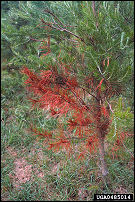 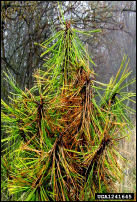 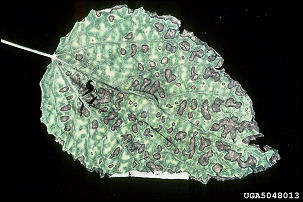 |
||
L-cedar killed |
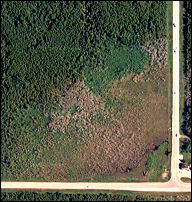 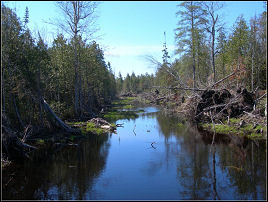 |
||
SALT INJURY - browning foliage, usually conifers, is often visible along highways, usually due to absorption of road salts L-salt damge to fir |
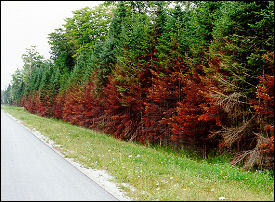 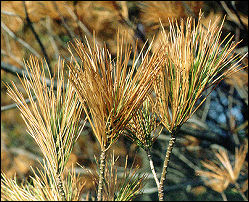 |
||
| URBAN SPLATTER - rural home construction in forested areas results in canopy changes, introduction of exotic species, loss of habitat, migration barriers, and other disruptions of ecological and economic patterns, especially disruptive along lakeshores and rivers | 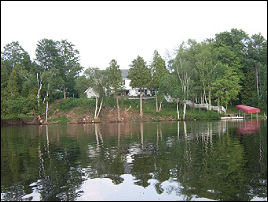 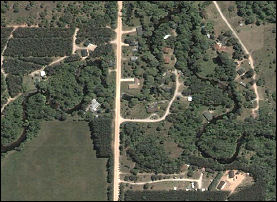 |
||
Abiotic (non-living) Agents |
|||
L-killed paper birch |
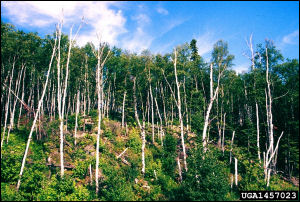 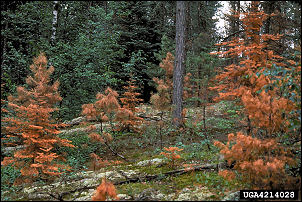 |
||
| FROST CRACKING - long splits occur on thin-barked trees, often repeatedly, south & southwest facing sides absorb solar heat in early spring-causing water movement-which freezes when sun goes down on cold nights, preventable by shading stems | 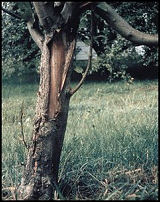 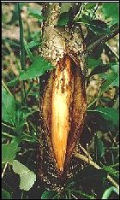 |
||
| FROST DAMAGE - late spring frosts kill new growth on leaders, more frequent in low areas called 'frost pockets', can also occur within tree planting tubes with rapid temperature drops below freezing after sunny days warm interior of tubes | 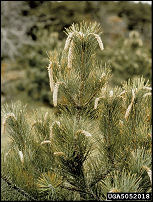 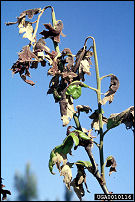 |
||
LIGHTNING - long spiral cracks on tall trees can be from lightning, white pine canopy emergents especially susceptible, trees can explode under the correct conditions L-exploded tree |
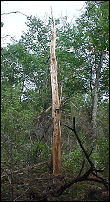  |
||
MECHANICAL DAMAGE- any wound resulting from breakage or bark removal, can be natural or human-caused in origin, structural damage to limbs or trunk, trees wounds never heal and can only be grown over L-"catface" |
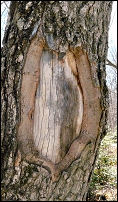 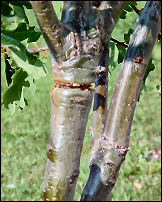 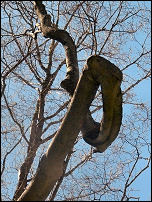 |
||
L-aspen scorch |
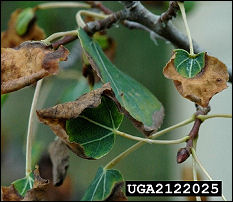 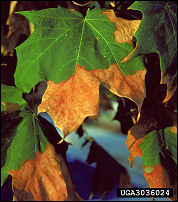 |
||
SNOW, HAIL, & ICE - heavy weight loads can cause branches to break, small trees can be bent resulting in lack of access to light, effects are worse when combined with wind, hail can strip leaves, flowers, and fruits L-jack pine breakage
|
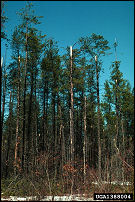 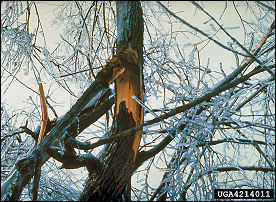 |
||
WILDFIRE - heat damage or outright combustion kills living tissues under the bark, fire can be a regenerative force, some forest types are naturally adapted to wildfire (e.g. jack pine, paper birch), distinct from prescribed burning L-aftermath in spruce-fir
|
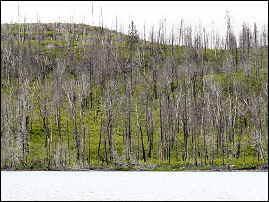 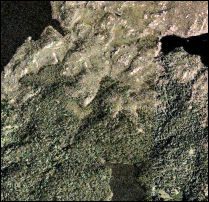 |
||
WIND - breakage can occur at places weakened by insects, disease, or malformation; major wind events cause considerable damage but can be a regenerative force in the landscape L-split at V-fork |
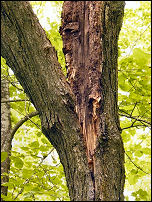 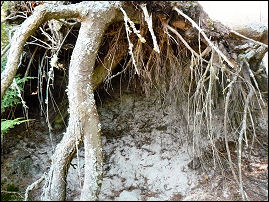 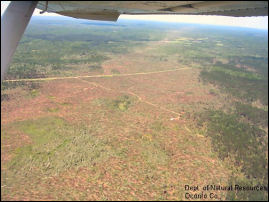 |
||
WINTER INJURY - under certain conditions, above-ground tissues can dry out to the point of death, freezing tissue is not usually the cause, dead needles and twigs are not usually noticable until spring or early summer, most noticable on conifers L-Christmas tree injury |
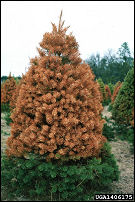 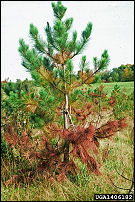 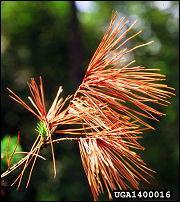 |
||
Image Citations
Beaver (2) - Randy Cyr, Greentree, Bugwood.org
Drought (1) - Steven Katovich, USDA Forest Service, Bugwood.org
Drought (2) - Minnesota Department of Natural Resources Archive, Minnesota Department of Natural Resources, Bugwood.org
Frost Damage (1) - USDA Forest Service - North Central Research Station Archive, USDA Forest Service, Bugwood.org
Frost Damage (2) - Andrew J. Boone, South Carolina Forestry Commission, Bugwood.org
Garlic Mustard (1, 2) - Victoria Nuzzo, Natural Area Consultants, Bugwood.org
Herbicide Damage (1) - David J. Moorhead, University of Georgia, Bugwood.org
Herbicide Damage (2) - Susan K. Hagle, USDA Forest Service, Bugwood.org
Hyrdologic Change (1) - courtesy of Google maps
Hydrologic Change (2) - courtesy Rod Chimner, MTU
Mouse Damage (1) - Dave Powell, USDA Forest Service, Bugwood.org
Mouse Damage (2) - Robert L. Anderson, USDA Forest Service, Bugwood.org
Nematodes (1) - Edward L. Barnard, Florida Department of Agriculture and Consumer Services, Bugwood.org
Nematodes (2) - A. Steven Munson, USDA Forest Service, Bugwood.org
Scorch (1) - William M. Ciesla, Forest Health Management International, Bugwood.org
Scorch (2) - Robert L. Anderson, USDA Forest Service, Bugwood.org
Snow/Ice (1) - Steven Katovich, USDA Forest Service, Bugwood.org
Snow/Ice (2) - Minnesota Department of Natural Resources Archive, Minnesota Department of Natural Resources, Bugwood.org
Urban Splatter (2) - courtesy of Google maps
Wildfire (2) - courtesy Google maps
Wind (3) - courtesy Wisconsin DNR
Winter Injury (1) - USDA Forest Service - North Central Research Station Archive, USDA Forest Service, Bugwood.org
Winter Injury (2) - USDA Forest Service - North Central Research Station Archive, USDA Forest Service, Bugwood.org
Winter Injury (3) - Linda Haugen, USDA Forest Service, Bugwood.org
All others - Bill Cook, Michigan State University Extension
Click HERE
to return to the U.P. Tree ID home page.
Click HERE to return to the Forest Health home page.
This site created and maintained by Bill Cook, MSU Extension Forester for the Upper Peninsula of Michigan. Editing and modification is ongoing. Submit suggestions, questions, and corrections to cookwi@msu.edu or call 906-786-1575.